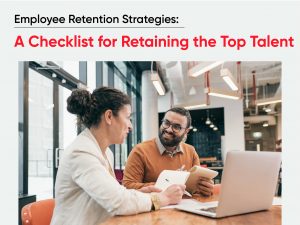Reading Time: 4 minutes
Labor Day serves as a reminder to reflect on the impact of workplace culture on employees. Workplace culture significantly influences employee satisfaction, motivation, and engagement.
However, various factors can impact workplace culture and employee well-being, and one issue that is often overlooked is workaholism, which can have significant negative consequences.
Creating a healthier workplace culture requires prioritizing work-life balance, promoting breaks and time off, and offering resources that support employee physical and mental health. Therefore, to cultivate a positive workplace culture, it’s essential to encourage a healthy work-life balance and ensure that employees have access to resources that support their well-being.
But before we dive into how employers can help employees with workaholism, let’s get a deeper look into the problem.
What is Workaholism?
Workaholism is the compulsive need to work excessively, which can negatively affect personal life, health, and relationships. It can also have negative consequences for workplace culture, leading to higher stress levels, lower morale, and decreased job satisfaction.
The Effects of Workaholism
Workaholism can severely affect individuals, including burnout, physical and mental health problems, and damaged personal relationships. It can also create a toxic workplace culture, leading to decreased productivity, increased absenteeism, high turnover rates, and low morale.
By recognizing the problem of workaholism and taking proactive steps to address it, organizations can prevent negative consequences and improve the well-being of their employees.
This includes modeling healthy work-life balance and prioritizing a supportive and productive workplace culture.
Difference between a workaholic and an engaged employee
While a workaholic and an engaged employee both display high levels of dedication to their work, there are significant differences between them.
A workaholic has an unhealthy obsession with work and may work long hours, even when not required, to the point where it negatively impacts their health and well-being. They may feel a compulsive need to work and struggle to take time off or disconnect from work, even during their leisure time. Workaholics may also fear failure or feel that their self-worth is tied to their work performance.
On the other hand, an engaged employee is committed to their work and is motivated to do their best. They may work hard, but they also prioritize work-life balance and can disconnect from work during their off-hours. As a result, engaged employees are more likely to feel fulfilled and more loyal to the company.
While workaholics may appear productive in the short term, their lack of work-life balance can lead to burnout, stress, and decreased productivity over time. In contrast, engaged employees are more likely to maintain sustainable productivity and job satisfaction over the long term.
Creating a Healthier Workplace Culture
Here are a few ways that workplaces can help reduce employee burnout and workaholism:
Encourage Work-Life Balance
One of the most effective ways to prevent burnout is to promote work-life balance. Employers can encourage employees to take time off and prioritize their personal lives. Encouraging flexible work hours, offering work-from-home options, and providing paid time off can help employees achieve better work-life balance.
Prioritize Mental Health Support
Employers should prioritize mental health support for their employees. For example, they can provide access to counseling, offer stress management workshops, and promote wellness activities like yoga and meditation.
Set Realistic Workloads
Employers should ensure that their employees’ workloads are manageable and realistic. Overloading employees with work can lead to burnout and workaholism. Regular check-ins and communication with employees help ensure that their workload is manageable.
Encourage Social Connections
Social connections in the workplace can help reduce stress and improve overall mental health. Employers can encourage social relationships by hosting team-building events, providing opportunities for employees to collaborate, and creating a positive work culture.
Provide Professional Development Opportunities
Providing professional development opportunities can help employees feel engaged and motivated. This can include training programs, mentorship opportunities, and career development plans.
Create a Supportive Work Environment
Creating a supportive work environment can go a long way in preventing burnout and workaholism. Employers should prioritize open communication, provide regular feedback, and create a culture that values work-life balance and mental health.
Rewarding hardworking employees
Rewarding hardworking employees effectively encourages them to maintain a healthy work-life balance and prevent burnout. Recognizing and acknowledging the efforts of employees who consistently go above and beyond can make them feel valued and appreciated, boosting their morale and motivation.
When a manager or employer notices an employee becoming a workaholic, they should approach them and express appreciation for their dedication and hard work. At the same time, they should also communicate the importance of taking time off for their physical and mental health. This conversation can help employees understand that overworking may not be the best approach to achieving success and that taking breaks is just as crucial for their overall well-being.
Creating a workplace culture that promotes work-life balance is essential for individuals who struggle with workaholism. While there are several ways in which a company can help employees maintain a balanced lifestyle, the most crucial element is practicing self-care. Understanding the difference between working long hours and being a workaholic is critical, and it all starts with prioritizing self-care.
Developing self-awareness of one’s tendencies towards workaholism is a crucial first step. Monitoring the amount of time spent on work and recognizing when it starts to impact personal life negatively can help individuals take action to prevent burnout. Practicing disengagement, taking regular vacations, and setting healthy boundaries can also contribute to a healthy work-life balance that promotes well-being and prevents the development of workaholism.
By prioritizing self-care and developing healthy habits, individuals can create a balanced lifestyle that benefits their personal and professional lives.
To learn more about how you can make your workplace healthy and productive, Get in touch with our workplace culture experts.










